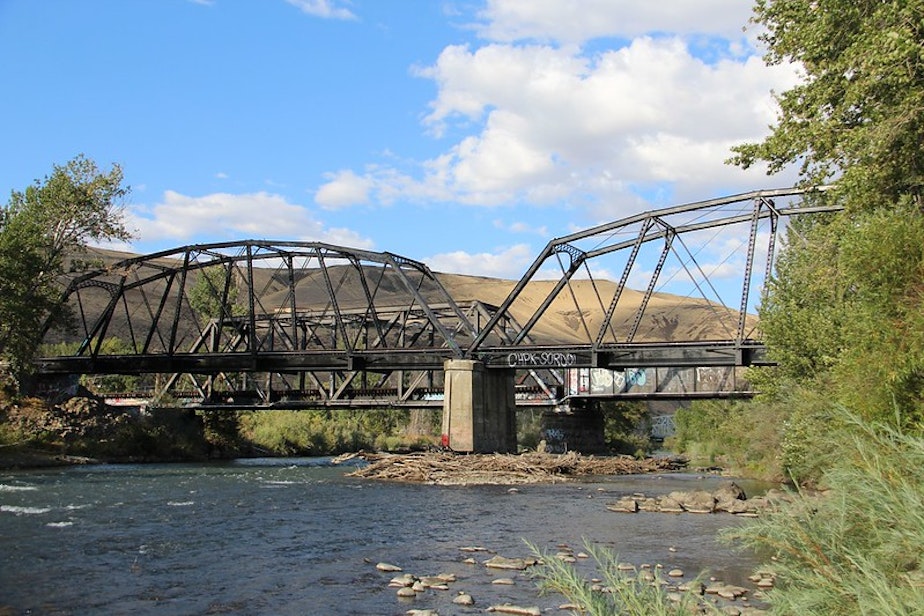NW drinking water concerns could get worse as the climate changes

Thunderstorms high in the Cascades recently stirred up a lot of dirt in a central Washington river, causing problems for people on its banks.
All the dirt in the Naches River was too much for the City of Yakima’s water treatment plant to handle. Desert cities and towns could see situations like this happen more often as the climate continues to change.
Climate change will cause more storm runoff, change when snowpack melts and lead to more severe wildfires and harmful algal blooms, said Amanda Hohner. She studies how post-wildfire runoff affects drinking water treatment plants.
“At least in the Western U.S., the effects of wildfire and also climate change are really starting to challenge drinking water treatment plants, resulting in different water quality than maybe those water treatment plants were designed for,” Hohner said.
In the Northwest, climate change is expected to alter how precipitation falls. Changes in snowpack and streamflow could mean places like the Yakima Basin in Washington and the Willamette River Basin in Oregon have bigger chances for more frequent water shortages in the summer, according to the University of Washington Climate Impacts Group and the Oregon Climate Assessments.
Sponsored
Climate change also could damage infrastructure and lead to service disruptions, according to the Climate Impacts Group.
Often, Hohner said, water treatment plants are used to dealing with fairly pristine water sources.
“There are new and different challenges than used to be faced because of these changes that are occurring over time,” she said.
The challenge for the City of Yakima was that this situation happened in the summertime with temperatures spiking and more water in demand.
This sort of thing normally happens in the spring or winter, when the river ices over or spring runoff kicks off too much sediment, said Mike Shane, the city’s water and irrigation manager. When the plant shuts down the city can pull water from its four wells, he said.
Sponsored
With the heat, the city’s backup water wells might not have held enough water. So, the city asked residents to conserve water for a few days – by washing their clothes and dishes only when machines are full, taking shorter showers, and watering gardens in the early morning or late evening.
The City of Yakima gets its water from the Naches River. Normally, the water treatment plant cleans up about 15 million gallons of water daily at this time of year, Shane said. Too much dirt can cause problems, he said.
“It clogs filters, and we’re not able to produce potable water in the same way we can when it’s not as turbid,” Shane said.
Water treatment plants are built to keep people safe and operators are used to dealing with seasonal changes – from drought in the summer to floods in the winter, said Dorothy Tibbetts, regional manager for the Washington State Department of Health’s Eastern Region Office of Drinking Water.
“Turbidity in water hides pathogens,” Tibbetts said. “It gives pathogens (a place) to grow and food and shelter. Turbidity hides those pathogens that do cause a risk to public health.”
Sponsored
That’s why it’s unsafe to drink directly from surface water without treatment, she said.
“The treatment system removes the turbidity for the filtration and disinfection steps to do their work to remove the pathogens from the water served to the public,” she said.
Climate change is a concern for the quality of drinking water sources, especially surface water sources, Tibbest said.
But, Hohner said, there are ways drinking water treatment plants can adapt – although some might be more expensive than others.
Water can be diverted to sedimentation basins before it gets to treatment plants. Or treatment plants can invest in better ways to manage the solid particles in the water. On the less expensive side of the scale, treatment plants can monitor more upstream to see what’s headed their way.
Sponsored
They also might have to rely more on backup water sources. In that area, she said, Yakima’s water users are lucky.
“Not every utility has multiple sources of water,” she said. [Copyright 2023 Northwest News Network]
